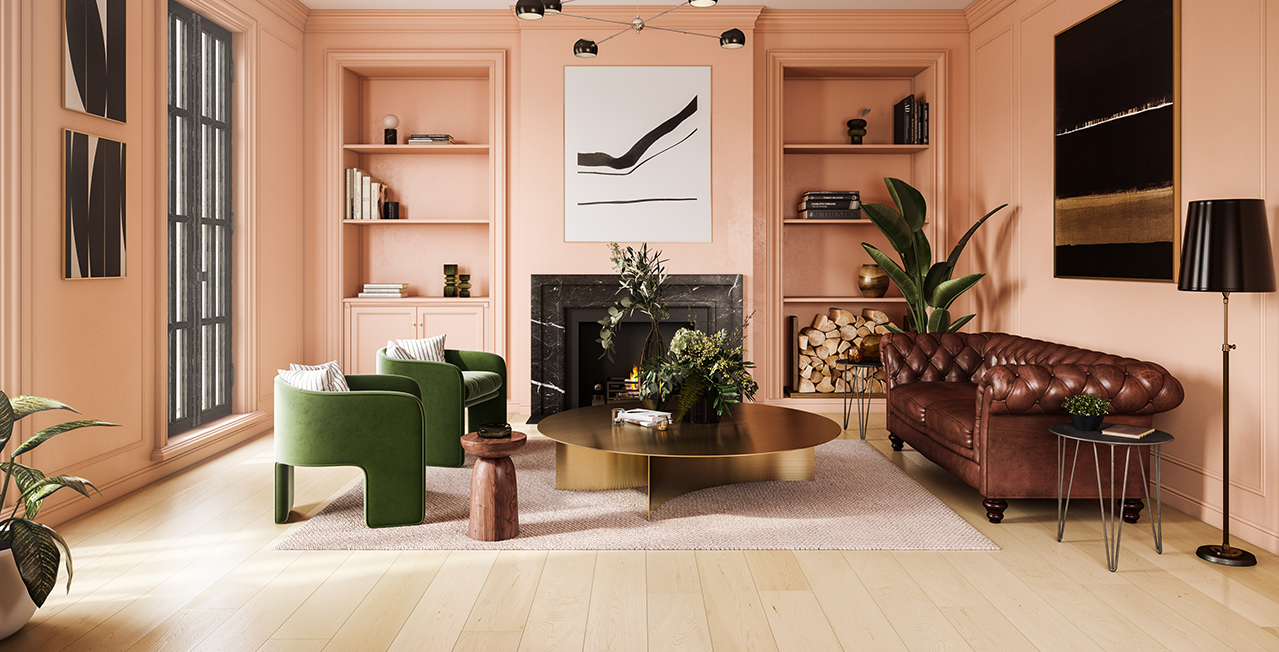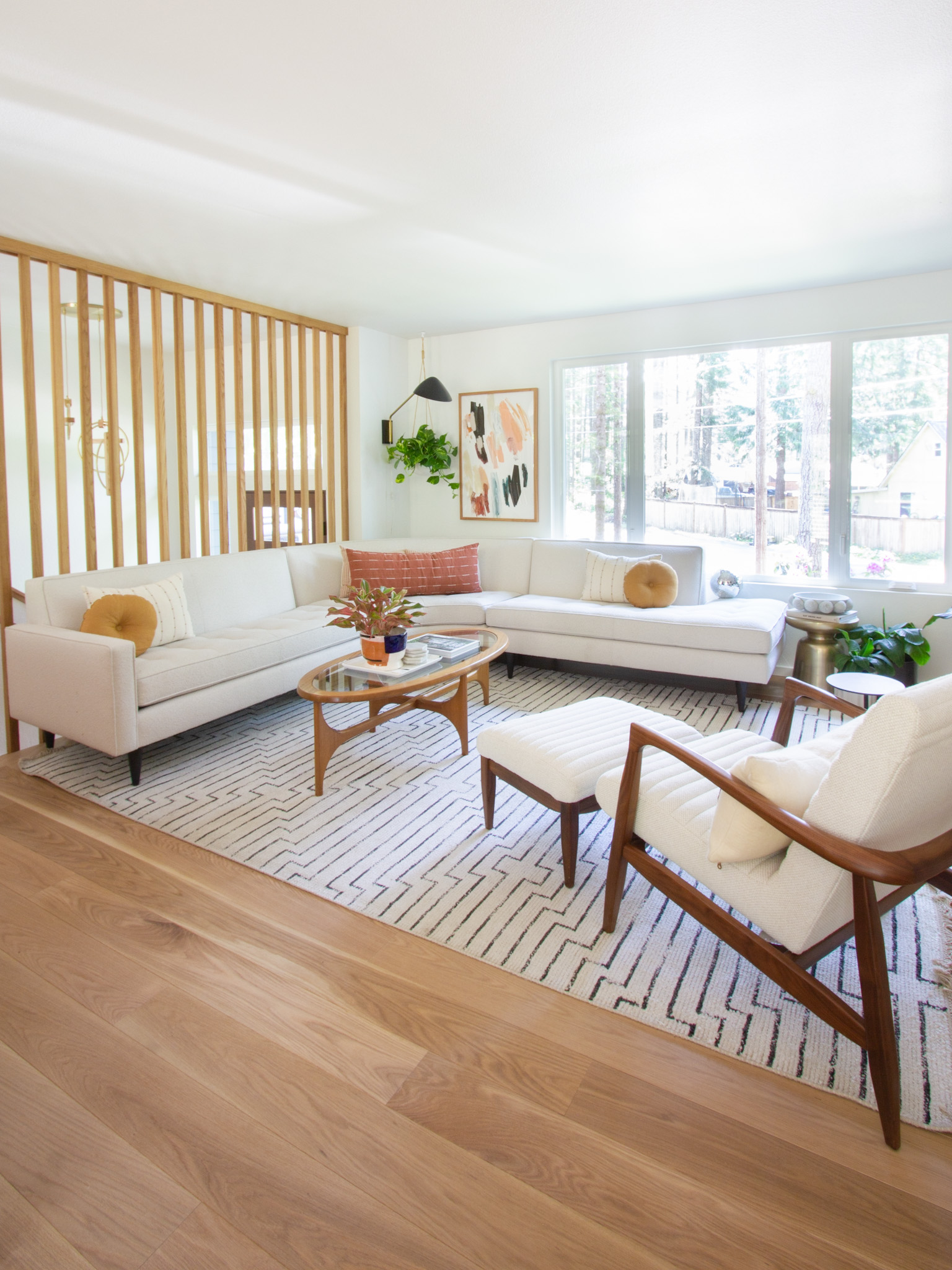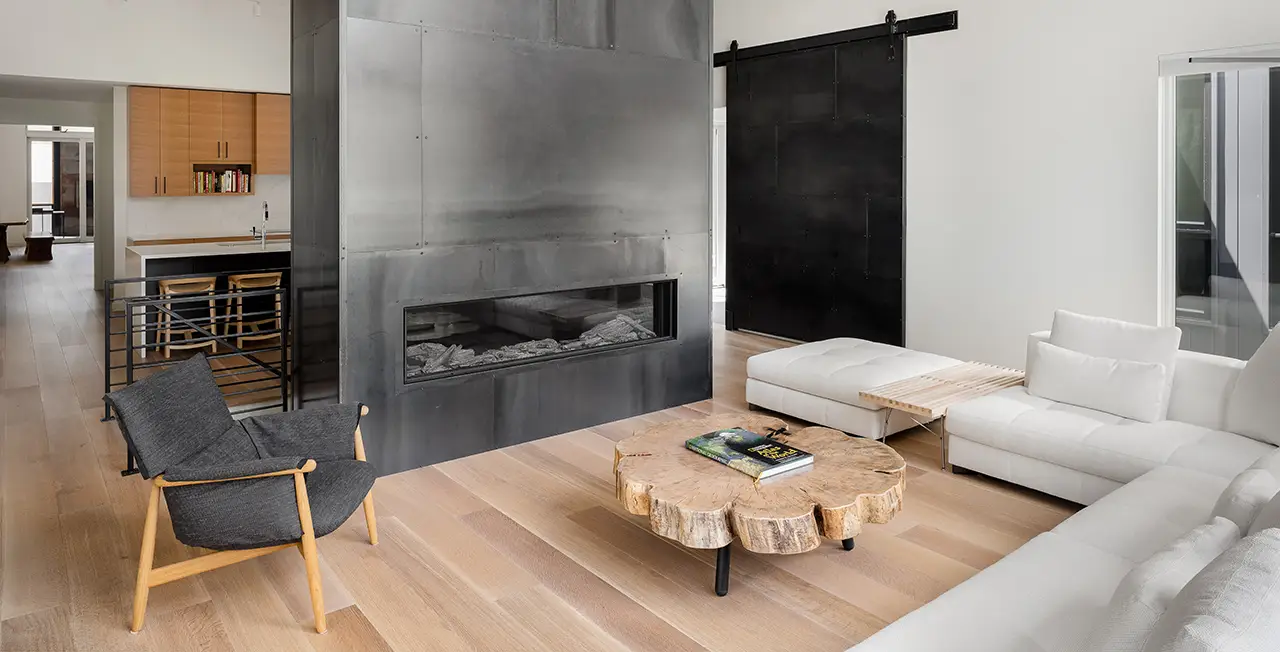Timeless meets trendy in mid-century transitional home design, blending the best of mid-century modern and traditional styles.
Do you love minimalist design, graphic shapes, and muted tones—but with a pop of color and modernity? Meet mid-century transitional design, a hybrid aesthetic that evolved from mid-century modern and traditional styles and is increasingly popular for its timeless appeal with a modern spin. Keep reading to learn about this aesthetic and how to bring it into your home through flooring.
What is Mid-Century Transitional Design?
Mid-century transitional design is a trend inspired by the classy, sophisticated flair of post-World War America. It inspired a movement that’s persisted to this day—rooted in functionality, clean lines, and simplicity. Sleek geometric lines and wood features—often teak, rosewood, and oak—dominate the look and feel of this aesthetic.
Transitional styling started to gain traction during the 1950s mid-century modern craze, pulling in more traditional design elements—warm tones, architectural details, and classic symmetry—alongside MCM’s minimal and bright look. This mid-century transitional style is more playful than a full traditional design, filled with modern accents and pops of color, but still includes the refined, timeless signature style. It pays homage to time-honored design while dabbling in more modern trends.

Flooring is an important element to focus on in any mid-century transitional home. Mid-century modern is all about sleek lines—clutter-free design is the name of the game. Without any extra décor, the eye is instantly drawn to the flooring. The right floor can anchor the room visually and enhance the mid-century transitional design look and feel, so it’s important to invest in the centerpiece of your home by crafting a striking focal point.
Mid-century transitional design offers a clean, modern look with all the warmth and luxury of a traditional home. If you find yourself drawn to multiple styles, mid-century transitional can bridge disparate design elements to create a singular, cohesive environment that’s both sophisticated and energizing.
How to Create a Custom Floor for a Mid-Century Transitional Home
With a custom floor, you can control every design aspect and bring your dream floor to life. The following four areas are decision points for any custom floor, and each choice contributes to creating a different overall look and feel. If you want to achieve a mid-century transitional style floor, here’s how each element can contribute to that aesthetic.

1. Wood plank width. At Carlisle, wood plank widths range from 4” to 20.” Selecting a specific width—or a mix of widths—can shape the look and feel of the floor and the room. In the mid-century, typical floors were made with narrower planks, so using 6” planks can feel true to the time. If you’re looking to lean into clean lines and practical aesthetic, you could opt for 8” wide planks. Wider planks have fewer seams and lines, creating a sleeker overall look.
2. Wood plank length. It may seem like an insignificant decision, but selecting the right wood plank length is critical—especially if you’re after an authentic mid-century transitional floor. Floors installed in the 1950s and 60s typically had very long boards; it wasn’t until the late 1960s and early 70s that mass production and commoditization of wood flooring led to shorter planks. Choosing longer planks will instantly evoke that mid-century period and make your floor more authentic. Longer planks are also a sign of quality wood—the type that will last for generations. Carlisle’s wood planks range from 2’ to 12’, with the average length between 6’ and 10’. Like wide planks, longer planks can also reduce the number of seams by 80%.
3. Wood grade. Selecting planks with suitable characteristics is crucial to achieving the polished look of a mid-century transitional design. While rustic knots and distinctive grain patterns have their place, a mid-century transitional style shines with higher-grade wood, like Carlisle’s Heirloom grade. Heirloom grade planks are hand-selected by craftsmen for less variation and smaller knots, creating a luxurious, refined hardwood floor unlike any other.

4. Wood color and finish. At the height of mid-century modern and transitional designs, Red Oak was one of the most popular hardwoods—finished with just a clear coat to let the natural tones shine through. These days, those tones might not be as popular, but it’s easy to achieve a similar effect with more widespread and timeless appeal. Rather than picking a stain color, select wood with a gorgeous natural color that leans on the lighter side. Woods like White Oak, White Maple, and Eastern White Pine will create a bright, airy feel with their naturally light finish.
Bringing Your Mid-Century Transitional Floor to Life
Turn the process of creating a custom floor from daunting to exciting with the support and guidance of a Carlisle Wide Plank Specialist. We’ll walk you through each step to ensure that your hardwood floor brings your vision to life. Trust us: It’ll be even more perfect than you can imagine.